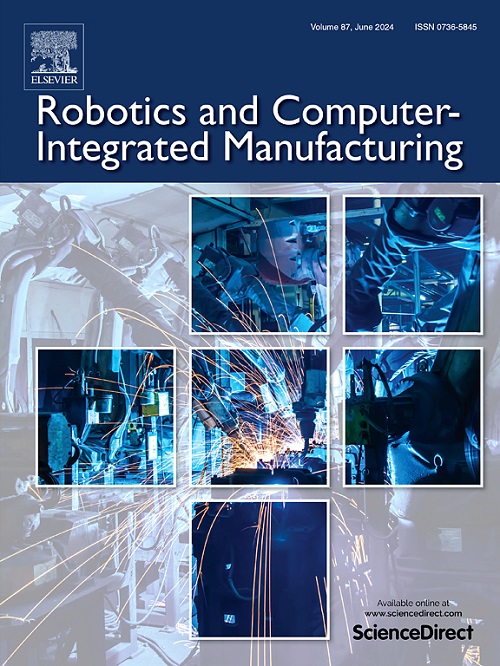A step-driven framework of digital twin model for product assembly precision based on polychromatic sets
IF 9.1
1区 计算机科学
Q1 COMPUTER SCIENCE, INTERDISCIPLINARY APPLICATIONS
引用次数: 0
Abstract
The integration of digital twin technology into the assembly process of complex precision mechanical products has become a significant and feasible means to improve product assembly quality and consistency by performing dynamic assembly precision prediction and henceforth assembly process optimization. Most current research predominantly focuses on modeling the actual machining error of components and their subsequent error propagation, with limited attention given to the methods driving the precision models of digital twins in the product assembly process. In this paper, an assembly operation-driven framework for synchronizing digital twin models dedicated to product assembly precision prediction is proposed based on the polychromic sets theory. Firstly, taking the assembly feature as the core of digital twins for assembly precision, homogenous coordinate transformation matrix is adopted to establish connections between assembly hierarchy objects and conduct assembly deviation propagation calculations. Secondly, the association relationship among product parts, assembly features, and assembly feature pairs is constructed in the form of the polychromatic sets matrix. Further, by linking the assembly sequence, a general enabling framework that can be used for automatic inference in constructing and updating assembly precision prediction models for the assembly process is established. Finally, a data model associated with the instantiation of the assembly precision prediction model is provided, and the assembly process of the high-pressure compressor rotor is taken as a case study to verify the effectiveness of the framework model in practical applications.
基于多色集的产品装配精度数字孪生模型步进驱动框架
将数字孪生技术集成到复杂精密机械产品的装配过程中,通过对装配精度进行动态预测,进而对装配工艺进行优化,已成为提高产品装配质量和一致性的重要而可行的手段。目前的研究主要集中在对零件的实际加工误差及其后续误差传播进行建模,而对产品装配过程中驱动数字孪生精度模型的方法关注有限。基于多色集合理论,提出了一种装配操作驱动的数字孪生模型同步框架,用于产品装配精度预测。首先,以装配特征作为数字孪生装配精度的核心,采用齐次坐标变换矩阵建立装配层次对象之间的联系,进行装配偏差传播计算;其次,以多色集合矩阵的形式构造产品零件、装配特征和装配特征对之间的关联关系;此外,通过连接装配序列,建立了装配过程装配精度预测模型自动推理和更新的通用使能框架。最后,给出了装配精度预测模型实例化相关的数据模型,并以高压压缩机转子的装配过程为例,验证了框架模型在实际应用中的有效性。
本文章由计算机程序翻译,如有差异,请以英文原文为准。
求助全文
约1分钟内获得全文
求助全文
来源期刊
CiteScore
24.10
自引率
13.50%
发文量
160
审稿时长
50 days
期刊介绍:
The journal, Robotics and Computer-Integrated Manufacturing, focuses on sharing research applications that contribute to the development of new or enhanced robotics, manufacturing technologies, and innovative manufacturing strategies that are relevant to industry. Papers that combine theory and experimental validation are preferred, while review papers on current robotics and manufacturing issues are also considered. However, papers on traditional machining processes, modeling and simulation, supply chain management, and resource optimization are generally not within the scope of the journal, as there are more appropriate journals for these topics. Similarly, papers that are overly theoretical or mathematical will be directed to other suitable journals. The journal welcomes original papers in areas such as industrial robotics, human-robot collaboration in manufacturing, cloud-based manufacturing, cyber-physical production systems, big data analytics in manufacturing, smart mechatronics, machine learning, adaptive and sustainable manufacturing, and other fields involving unique manufacturing technologies.

 求助内容:
求助内容: 应助结果提醒方式:
应助结果提醒方式:


